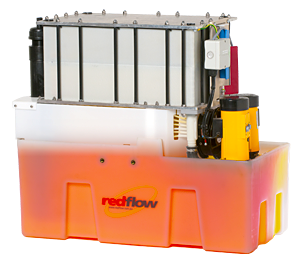Renewable energy battery storage system
An Australian company is leading the way in renewable energy battery storage systems with the installation of a prototype at a Queensland university. Dimi Kyriakou finds out what this development will mean for electricians in the future.
Storage and demand technology is tipped to become a popular option in the renewable energy industry. And in the current landscape of slashed solar rebates and dwindling incentives for the uptake of clean energy, you can certainly understand its appeal.
Currently, intermittent renewable energy provides less than a third of Australia’s total energy mix. However, storage and demand technology systems can help to ensure that renewable electricity is better stored during low usage times and subsequently accessed during peak times. The ability to do this will no doubt relieve demand on the grid and cut down the amount of fossil fuels needed to generate the ‘back-up’ energy during these peak usage times.
ADVERTISEMENT
Fortunately, Queensland technology company RedFlow has recognised this potential opportunity in the market. It develops and manufactures zinc-bromide flow batteries that are designed to be integrated into electricity storage systems for a range of stationary applications. The features of its standard zinc-bromide module (ZBM) mean that they are ideal for storage and shifting of intermittent renewable energy, managing peak load on the grid, as well as supporting off-grid ‘island’ power systems.
The concept is even closer to becoming a commercial reality after RedFlow launched its renewable energy battery storage system, the M90, at the University of Queensland’s St Lucia campus last year.
“This is a demonstration system that shows how ZBM batteries can work in conjunction with solar. It’s basically showing the capability of the technology in this type of application,” RedFlow’s Mio Nakatsuji-Mather says.
RedFlow has received $3 million of support under the Federal Government’s R&D Tax Incentive, which provides tax offsets to encourage more small companies to engage in research and development. The company also received additional payment to develop small residential-scale systems that have been installed in the government’s Smart Grid, Smart Cities trial in Sydney.
“We originally started building very small energy storage systems that were based around one or two ZBMs. However, there is a need for larger energy storage systems and installing the M90 at the University of Queensland was an initial step to achieving that,” Mio says. RedFlow’s standard zinc-bromide module (ZBM) is ideal for storage and shifting of intermittent renewable energy, managing peak load on the grid and supporting off-grid ‘island’ power systems.

The M90 storage system is made up of 24 ZBMs housed in a 6m shipping container which is connected to a 340kW solar array at the University of Queensland campus. The zinc-bromide battery is seen as the ‘building blocks’ to the system; while each battery is rated at 5kW and 10kWh, when combined together in the M90 system it produces a 90kW power output, with 240kWh of capacity.
(Later this year, the campus will also play host to a larger system boasting 36 ZBMs and a 120kW power output with 360kWh of capacity.)
According to Mio, the M90 is capable of storing large amounts of electricity from sources such as solar or wind power which can be used during peak demand periods or at night.
“The way it works is that this particular system charges from the grid during off-peak hours, as well as the energy that is produced by the university’ solar array during the day. It then discharges during the peak period, which is between 4pm and 8pm,” she explains.
“If you can store renewable energy at the times when there is more generation or it’s cheaper to generate, and then discharge that stored energy during peak times, that’s where the value in the technology is.”
There are also many advantages to using the zinc bromide batteries themselves; its daily deep charge and discharge capability is ideally suited to storage and demand technology, and you can discharge 100% without causing adverse effects on the life of the battery.
“The ZBM is also a primarily plastic product – as we move into larger volumes of manufacturing, the price is expected to come down as the materials are sourced in volume. So in terms of mass-manufacturing, the potential is definitely there for the cost to come down.”
A technology in progress
While Mio stresses that the M90 at the University of Queensland is only a demonstration system, RedFlow plans to develop its storage and demand technology further – at which point electricians will definitely have a role to play in the installation and maintenance of these systems.
In the wake of slashed solar rebates, it has become increasingly necessary for clean energy installers to educate clients about the ways to get the most value out of their renewable energy technologies.
“There has to be some kind of role for energy storage and zinc-bromide battery technologies going forward and I think that will become clearer as demand for electricity grows and governments increase their reliance on renewable energies,” Mio explains.
“The unfortunate thing about most renewable energies is that they’re intermittent. The way to get the most value is to store that energy and discharge it at a time when it’s most needed.
“If that happens, I think utility structures and feed-in tariffs will reflect that, so consumers will get more money if they discharge energy during peak times rather than during the day. The M90 storage system makes renewable energies more appealing to consumers and hopefully it’s a way to get a lot more value out of solar, wind and other clean technologies.”
-
ADVERTISEMENT
-
ADVERTISEMENT
-
ADVERTISEMENT
-
ADVERTISEMENT
